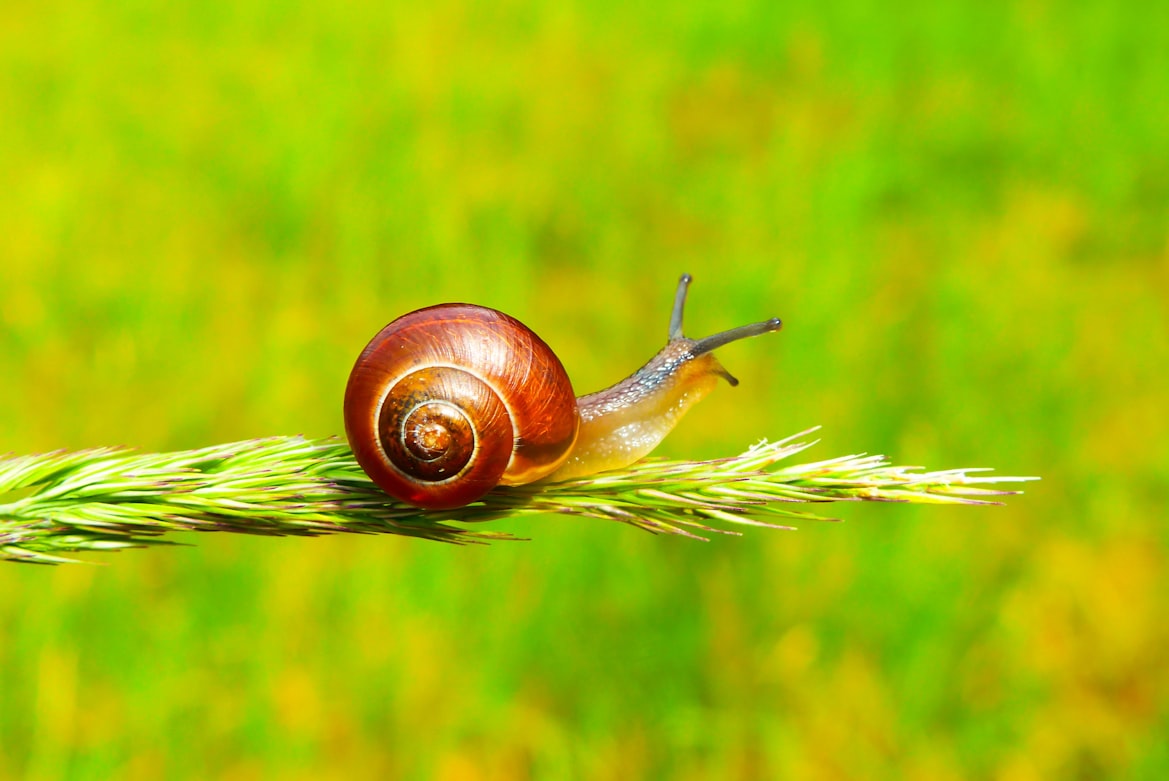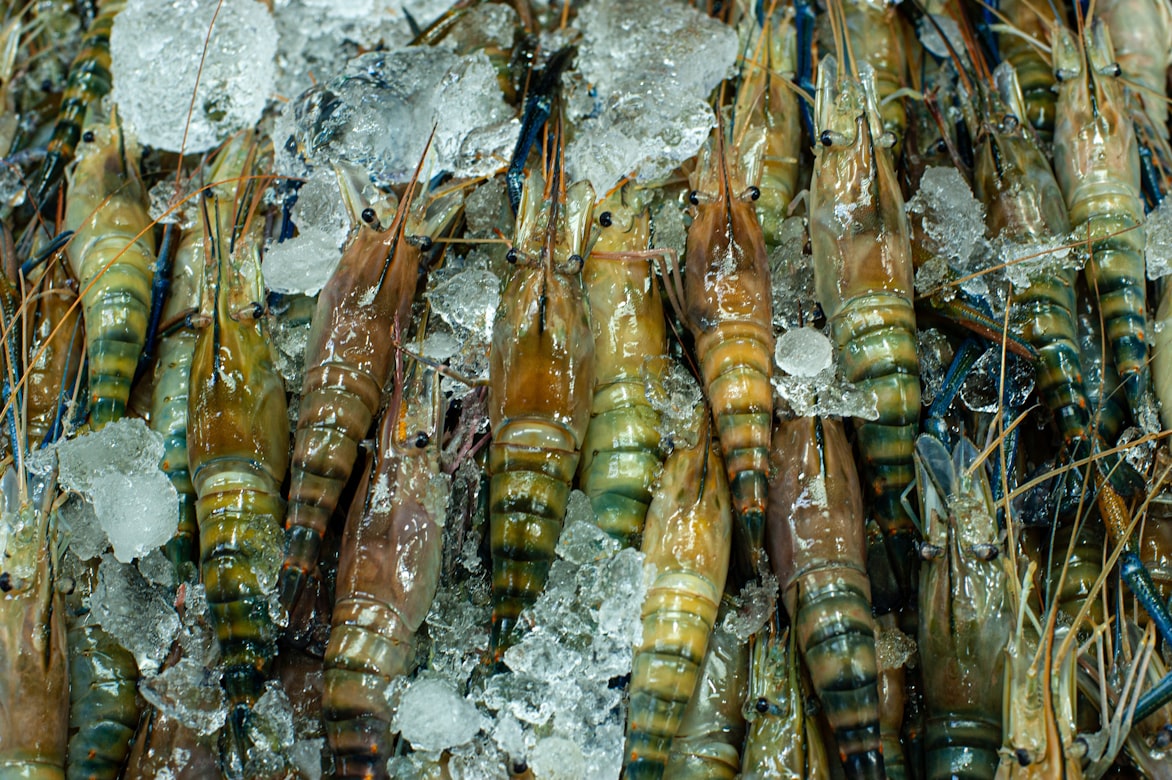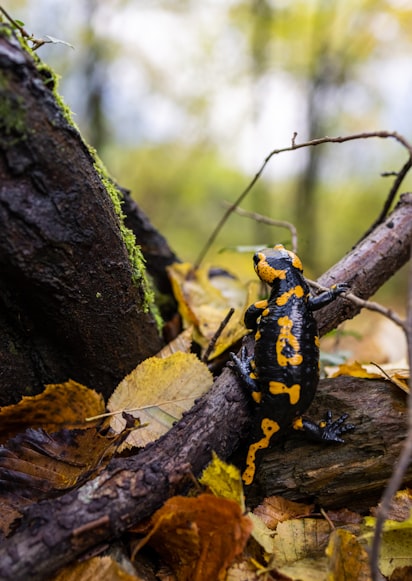As an Amazon Associate I earn from qualifying purchases.
What Do Baby Salamanders Eat?
If you live in an area with bodies of water or small streams, you’ve undoubtedly encountered a salamander in the wild. These adorable little amphibians adore wet places and can be found all across five continents, although they are particularly common in North America.
If you’re considering acquiring a salamander as a pet or want to learn more about them, you should know what they eat.
Salamanders are small, unique amphibians with a wide range of color and adaptation options. They can be as tiny as 0.6 inches to almost 3.8 feet in length! Pygmy salamanders are the tiniest of these endearing little amphibians, while giant Chinese salamanders are the biggest.
Salamanders are aquatic or semi-aquatic in nature, with smooth, slippery bodies that glide well in water. They are purely aquatic as youngsters. Their gills will cease to function when they mature, and they will be equally competent in both land and water.
What Do Baby Salamanders Eat?
Adult salamanders eat frogs, fish, and other animals; while baby salamanders consume only tiny invertebrates. Baby salamanders are known as nymphs.
Only one species of salamander gives birth to live young. The majority of salamander species deposit their eggs in water, and even terrestrials will migrate towards a location with some form of water to lay their eggs. Because baby salamanders are developed in water, what they can eat is restricted.
Nymphs do not have legs at first and appear to be frog tadpoles in terms of appearance. They go through metamorphosis, the changes that occur in amphibians from one stage to another, during which they transform into adults.
Nymphs are naturally carnivorous from birth and are born with teeth. They consume their own eggshell for the first week of life, after which they venture out to eat tiny prey including tiny bacteria, plankton, brine shrimp, or little insects while still remaining in the water.
Nymphs eat progressively larger animals as they develop into their juvenile stage and then into adulthood. This is also when they tend to migrate back to their natural habitat, either remaining aquatic, becoming semi-aquatic, or transitioning to terrestriality. There are many different habitats in which to live. Adult salamanders can be distinguished from tiny tadpole-like youngsters by the external markings on their bodies, as well as size and color. After two months, they become adults.
What Do Baby Salamanders Eat in The Wild?

The salamander eats a variety of insects and animals in the wild. Its diet is determined by size. It will consume almost anything that moves and is small enough to swallow.
The wild salamander consumes centipedes, spiders, worms, slugs, flies, maggots, termites, and snails. Large salamanders, such as frogs and smaller salamanders, eat them. Aquatic salamanders in the wild consume insect larvae, crayfish, worms, snails, small species of fish, and other small aquatic animals.
Baby salamanders are amphibians that, like adult species, have gills on the sides of their heads. Live tubifex worms, baby brine shrimp, daphnia or water fleas, white worms, and black worms should all be fed to your baby salamander. If you cut a nightcrawler into small pieces, it may be fed. The juvenile salamanders consume ghost shrimp and tiny crayfish as they get older. Freeze-dried or frozen meals are not accepted by the majority of salamanders. They are attracted to live food moving around.

What Do Smaller Species of Salamanders Eat?

Small terrestrial salamanders would eat smaller insects and worms if they could. Give him fruit flies, pinhead crickets that have been fed a gut loading diet, minute grubs, and earthworms that have been finely chopped. Serve a varied selection of these for adequate nutrition. Before giving your salamander crickets, coat them with vitamin and calcium powder. Waxworms, huge crickets, lesser waxworms, whole earthworms, or newborn mice should not be fed to smaller salamanders.
What Do Baby Tiger Salamanders Eat?

Tiger salamander infants will eat aquatic invertebrates like brine shrimp, daphnia, insects, worms, and small fish.
Adults can be fed a variety of feeder insects, such as crickets, earthworms, wax worms, and wild-caught insects. They may also get a pinkie mouse once in a while. Make sure the area you’re collecting isn’t contaminated with pesticides. Furthermore, be careful not to put these salamanders in any tanks with smaller salamanders since they may become a meal for them.
How To Feed Baby Salamanders?

Salamanders are lovely, distinctive pets that are simple to care for. Once you know how salamanders eat, feeding them is a straightforward process. Feeding a salamander is as easy as serving live insects and invertebrates every few days.
Feeding Land-Based Baby Salamanders
Land-dwelling salamanders consume a diet consisting of worms and insects. You don’t have to go out in your garden and seek these creatures, though. This salamander food can be found at any pet shop.
Your salamander, on the other hand, will delight in eating crickets, mealworms, earthworms, maggots, mosquito larvae, and buffalo worms. This type of diet is nutritious and full of nutrients for your salamander.
Feeding Water-Based Baby Salamanders
Water animals, such as aquatic salamanders, require water animals. Bugs will not suffice for a water-dwelling salamander. They eat things that float in the water, such as shrimp. You can also get these items at a pet store. Tackle shops may be able to supply them.
The most common diet of an aquatic salamander is brine shrimp. They also like minnows, other types of shrimp, nightcrawlers, and worms such as blackworms and earthworms, among other small fish.
Feeding Salamanders By Hand
Feed a hesitant salamander by hand. If your salamander isn’t eating, consider feeding it yourself. You may feed the live bug to the insect using a toothpick or tweezers. Wait for the salamander to consume the bug after holding it steady above it. When you first acquire a salamander, it’s possible that it won’t consume. They may also be hesitant to try new dishes. Before changing foods or consulting a veterinarian, attempt hand-feeding them.
If you bought your salamander at a pet store, give it food on a daily basis for a while. Salamanders purchased from a pet shop are frequently underfed and thin. This implies that you should feed them every day until your salamander adjusts to its new environment and gains some healthy weight.
Adjust the feeding schedule of your salamander if necessary. There may be various causes for your salamander to require more or less food. They typically require more food in the summer and less in the winter, for example. As a result, you may need to alter your two to three times weekly feeding regimen.
You may need to feed your baby salamander more often. If your salamander is underweight, you should feed it more frequently.
What Are The Natural Predators of Baby Salamanders?
Salamanders of smaller species have more predators than those of greater size. Some of the predators that may be found hunting for the tiny-spotted salamander include raccoons, snakes, skunks, and turtles. Skunks and raccoons frequently visit waterways near which they can dig beneath boulders in search of food. Salamanders are quite typical to find in this region.
Salamanders, like frogs, have a biphasic life cycle, which means that they begin their lives as larvae and later transition to adulthood. They must live in a moist environment near water in order for them to survive as adults. There are several predators that attack salamanders as larvae, but other predators target them when they become adults.
Humans are the primary predators of Chinese salamanders. These enormous salamanders can be caught in fisherman’s nets and sold for food or as pets.
When portions of the Amazon jungle are destroyed by humans, salamanders in these areas are at risk of perishing. In addition, when pollutants enter bodies of water and cause algal blooms, it can have a negative impact on the population of salamanders that reside there. Unfortunately, some salamanders try to traverse busy thoroughfares in order to access a nearby body of water, and they are killed by automobiles as a result.
How Do Baby Salamanders Protect Themselves From Predators?

It’s a harsh world out there, and salamanders and newts need ways to defend themselves against predators. They face dangers from a variety of animals including birds, snakes, fish, raccoons, frogs, and even other salamanders that might eat them. Because they have various methods of avoiding being eaten, salamanders and newts are unafraid of this.
Salamanders are nocturnal and more active during the cooler hours of the day. They seek to keep cool by resting under rocks or in trees during the day. At night, they come out to feed.
The bright, vibrant skin of these tiny amphibians functions as a warning to predators that they are poisonous. According to the San Diego Zoo, many salamanders have glands on their necks or tails that exude a bitter-tasting or even deadly liquid. Some species can also protect themselves against predators by pushing their rib bones through their skin and into the enemy’s with their muscles, producing needle-sharp tips that pierce the skin of both animals.
Salamanders and newts can use poisons and poisons to defend themselves against predators. If a salamander or newt could make someone sick or kill them, no one wants to eat it. Some salamanders employ bright colors as a warning sign to predators that they are poisonous. Aposematism is the term for this behavior.
What Are The Differences Between Baby Salamanders and Newts?
Newt and salamander are sometimes considered to be the same animal, and it’s no surprise that some people believe they’re the same species. However, there are differences between them.
Newts are a species of salamander belonging to the Pleurodelinae family of the Salamandridae subfamily. In general, Newts are salamanders, but not all salamanders are newts.
Newts as a whole live a semi-aquatic to aquatic existence as adults, but adult salamanders live mostly on land except when they’re breeding and laying eggs. Most newts have webbed feet and a paddle-shaped tail that helps them to thrive underwater. The tails of salamanders are usually longer and more rounded, with well-developed toes for digging in the dirt.
Despite these physical distinctions, the simplest method to identify what you’re seeing is to familiarize yourself with the species. The amphibian in this shot is a yellow-eyed ensatina, a California salamander species.
Are Baby Salamanders Healthy To Eat?
All species of salamander are poisonous, and they all appear to be harmless. It’s also worth noting that there is a significant distinction between a venomous creature and one that is poisonous.
Animals that are poisonous or dangerous if eaten include those that emit poisons from their glands. Ingesting the animal’s secretion, as well as handling it and then rubbing your eyes or putting your hands in the mouth, can also induce poisoning.
Animals that inject venom directly into their prey to incapacitate them, or in self-defense against a predator, are called venomous. Snakes and scorpions, for example, deliver venoms through bites or stings. Parotoid or granular glands are responsible for the poisons that salamanders generate.
It is thought that salamanders acquire their toxicity by eating or contracting strong germs, such as Vibrio spp. Salamanders, particularly the Pacific or Mountain salamander (Desmognathus fumea), are poisonous if eaten. Adults are more dangerous than youngsters.
Toxicity varies considerably between salamander species, and it may differ considerably among separate populations of the same species. Taricha species, including the Rough-Skinned Newt (Taricha granulosa), all contain tetrodotoxin, one of the most powerful poisons known to humanity. The Rough-Skinned Newt is by far the most toxic of the Taricha species.
Amazon and the Amazon logo are trademarks of Amazon.com, Inc, or its affiliates.

